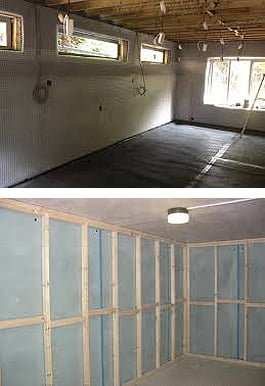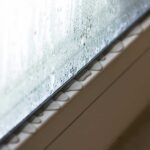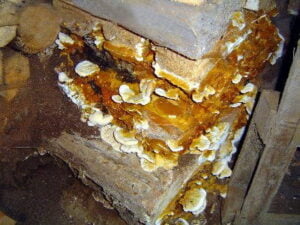Avoiding your Basement?
The basement area of a home is often a neglected space, used for storing odds and ends or maybe the home for a washing machine. It is also an area of the home that is highly susceptible to damp, meaning that it is impractical for day-to-day use.
However, with a quality waterproofing system in place, areas such as this can be transformed into a usable living space. Not only will this provide extra space in your home, but it can also add value to your property.
Damp problems in underground areas usually occurs due to the natural moisture in the ground seeping into your property, particularly if the water table is high. People that reside in flood plain areas for instance, are much more likely to have issues with damp in the underground areas of their home.
In the past, attempts to waterproof underground areas of the home have been a failure, mostly due to the types of systems used. A wet slurry applied to the walls was the most common practice, attempting to hold back the water that is attempting to penetrate the wall. These systems failed due to not only the pressure of the water breaching these systems, but due to bad drainage systems and shoddy workmanship.
Modern systems differ greatly from this. Cavity Drainage Systems do not hold the water back, instead channelling it away ensuring the interior surfaces stay dry. The water is then dispersed either by natural drainage or pumped away using a sump pump.
Prior to any work being completed, it is firstly important to check that there are no additional issues that could be exacerbating the damp in your cellar or basement. Leaky drains or guttering can be the main cause of issues such as damp, therefore it is vital to rule this out beforehand.
Once any underlying issues have been addressed, the walls are then lined with a sealed membrane, allowing for an air gap where the water can flow to be channelled to the drainage system. The walls are then finished, usually with plasterboard. A sump pump is usually then installed under the floor to remove the excess water.
After the work is completed, and thorough checks have been done, your brand new living space can be utilised. Whether it’s a home office, extra bedroom or even a play room for the kids, having your basement area waterproofed can provide you with the extra space you need to make the most out of your home.
Keith Rennie is a Certificated Surveyor in Structural Waterproofing (CSSW), and has over 30 years’ experience in the damp proofing and waterproofing industry. He is dedicated to providing a service that is second to none. Want to revitalise your basement or cellar? Contact Keith Rennie today for more information about basement waterproofing.








